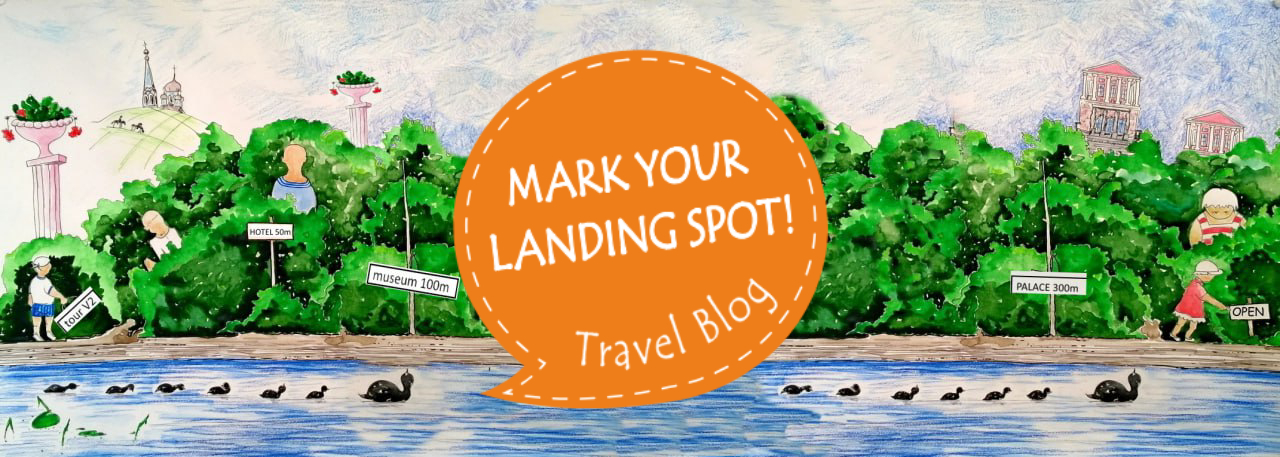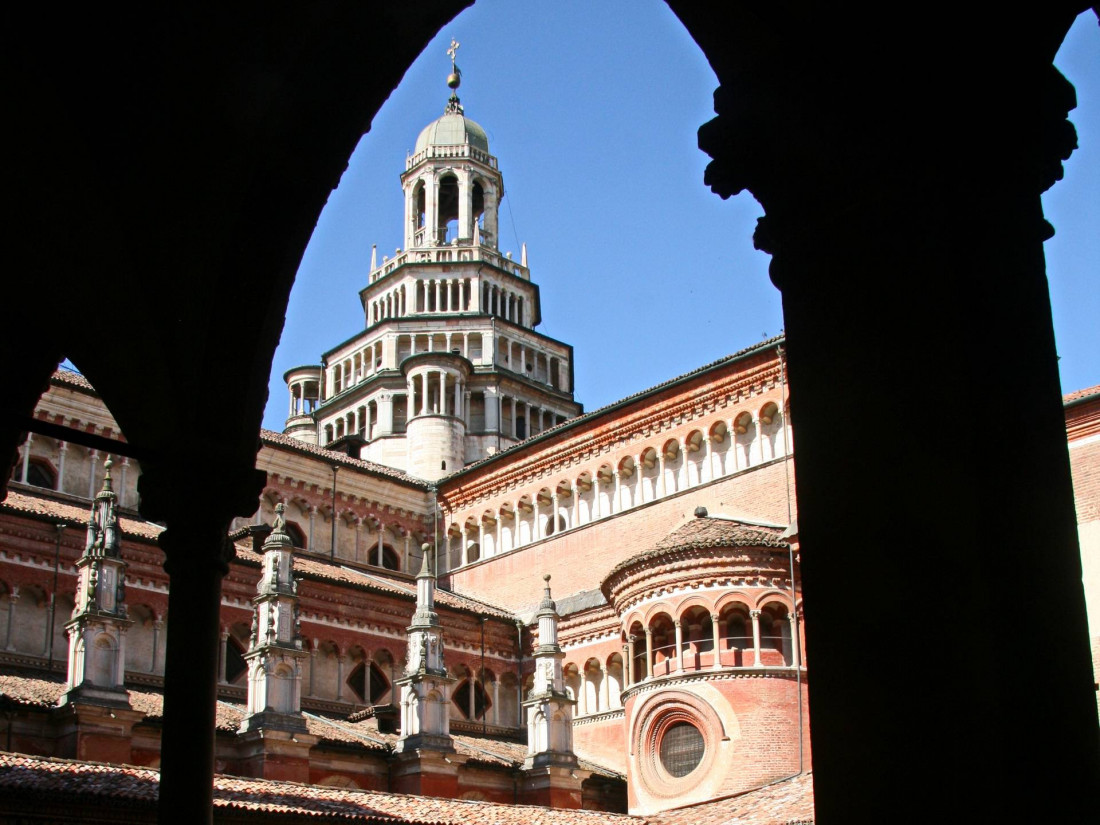The word Certosa comes from the Carthusian order — monks known for their silence, simplicity, and astonishing self-sufficiency. Wealthy patrons once lavished these monasteries with funds, and the Certosa di Pavia, built between 1396 and 1507, is among the finest in Italy.
Unlike many remote or closed monasteries, this one is easy to reach — and still active. You’re not stepping into a museum. You’re entering a living spiritual space. Monks still live here.
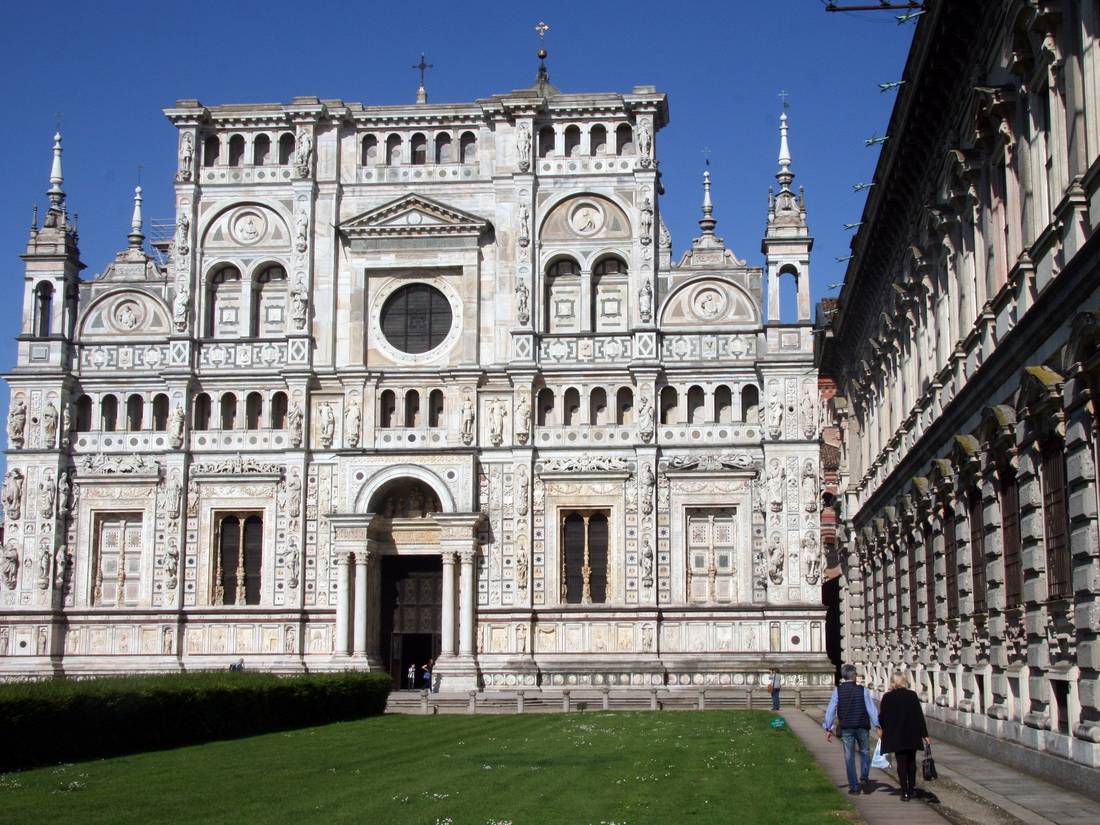
The front of Certosa — all symmetry, marble, and a definite “am I in a history book?” moment.

Every centimetre is carved by hand. Truly.
🧘 A monastery still alive
At its peak, the monastery housed 24 Carthusian monks. Today, seven Cistercian monks call it home — living a simpler communal life still rooted in silence, contemplation, and work.
There are surprising stories here. These monks didn’t just pray — they introduced rice farming techniques that are still used in Lombardy today.
During your visit, you might spot a monk or two. But only one is allowed to speak publicly. He leads the tours — a rare chance to hear the monastery’s story from someone who actually lives it.
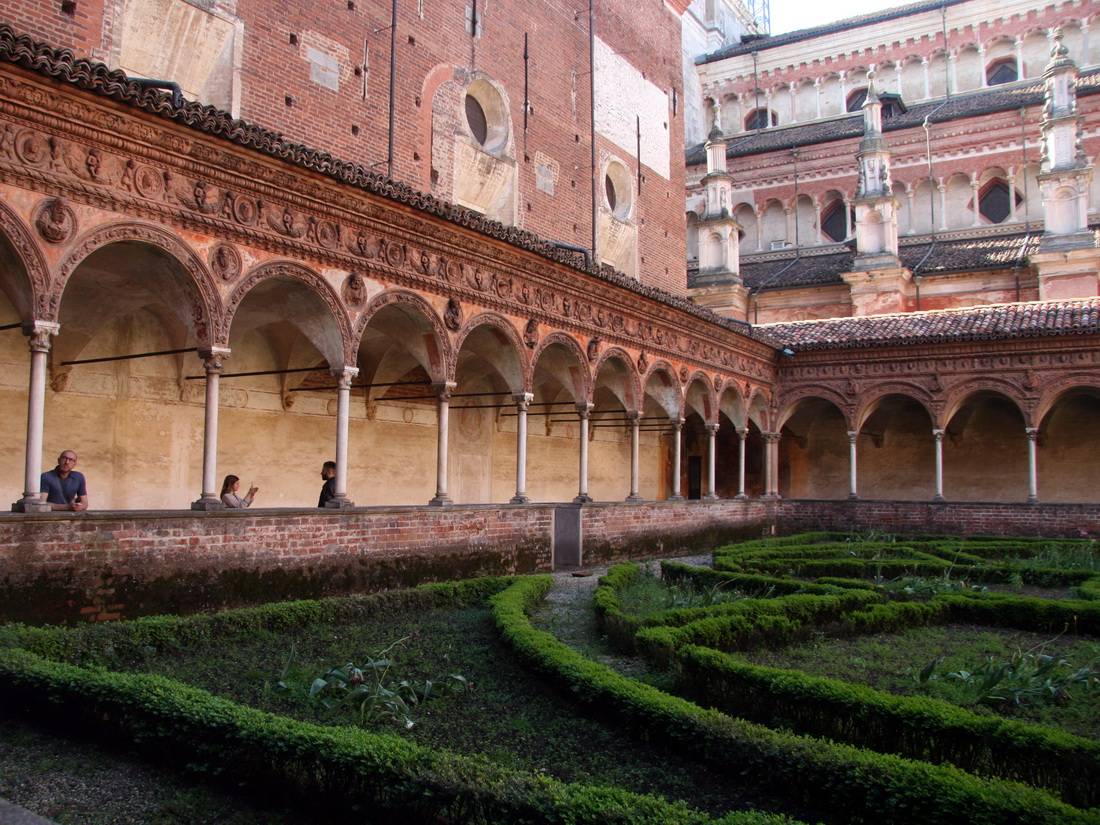
Perfect arches, trimmed hedges, and a silence that makes your footsteps feel loud.
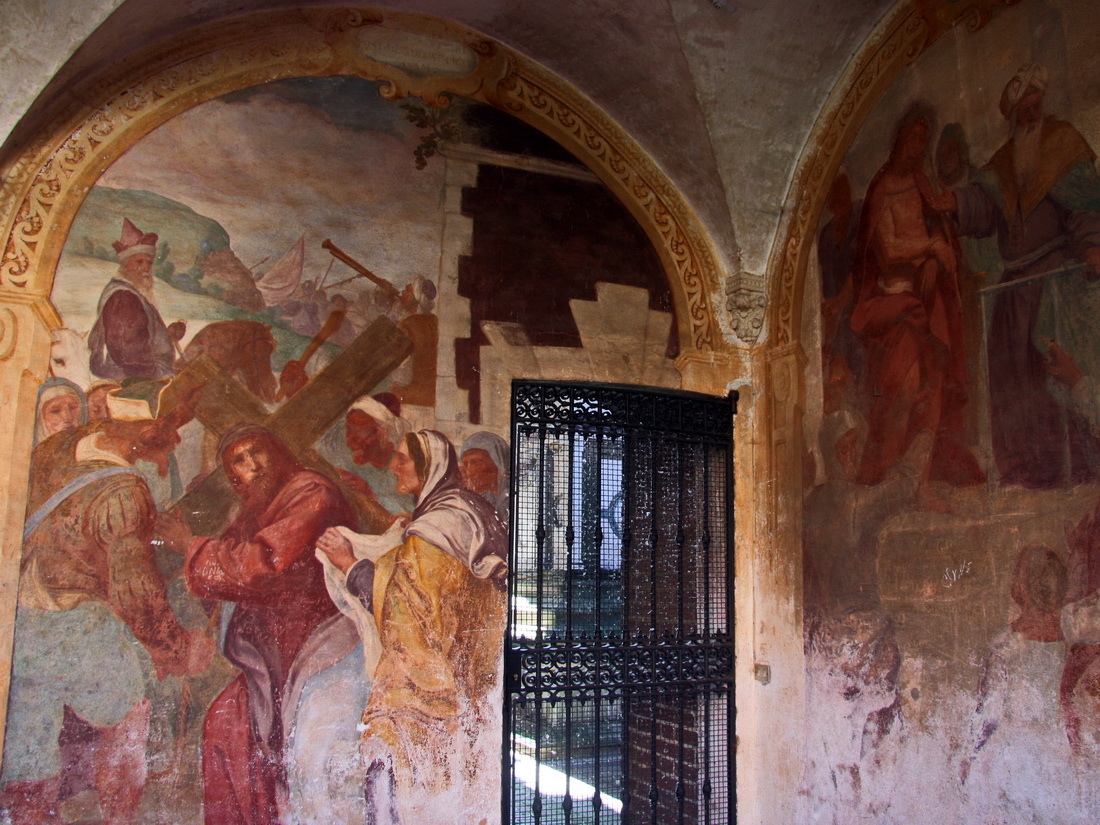
Centuries-old frescoes next to a locked gate. This really isn’t a museum.
What to expect on your visit
Visits last around 40 minutes. No booking required — just show up. Tours are in Italian, but even without the language, the visuals speak volumes.
The atmosphere is serene. You’ll explore the church, cloisters, chapels, and even step inside a monk’s cell — two small floors, a desk, and a private garden. Simple, beautiful, and deeply quiet.
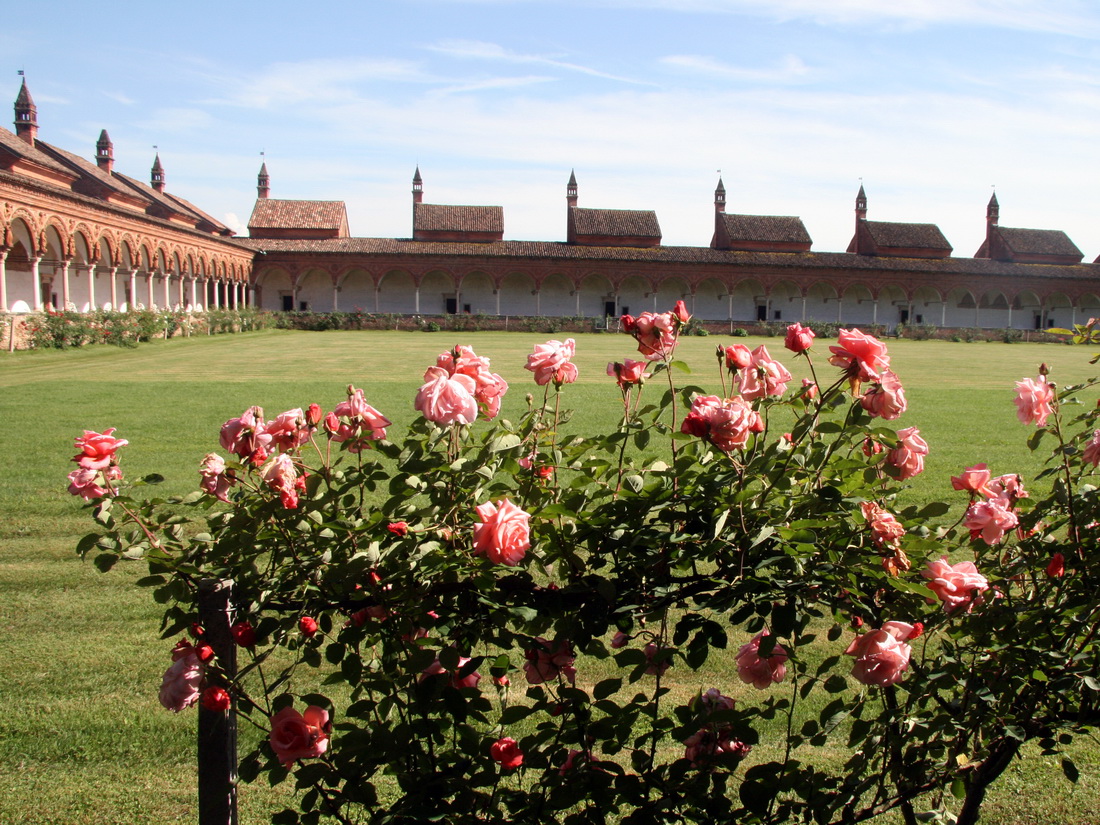
Each little rooftop? A monk’s cell. Plus roses, because even solitude deserves a view.
Look out for the little wooden “meal pass-through” shelves in the walls. Meals were delivered here, so monks could keep their vow of silence.
Art lovers will enjoy the mix of Renaissance and Baroque: stained glass, marble sculpture, frescoes — all nestled inside the soft hush of the monastery. There’s also a small museum with centuries of monastic artefacts.
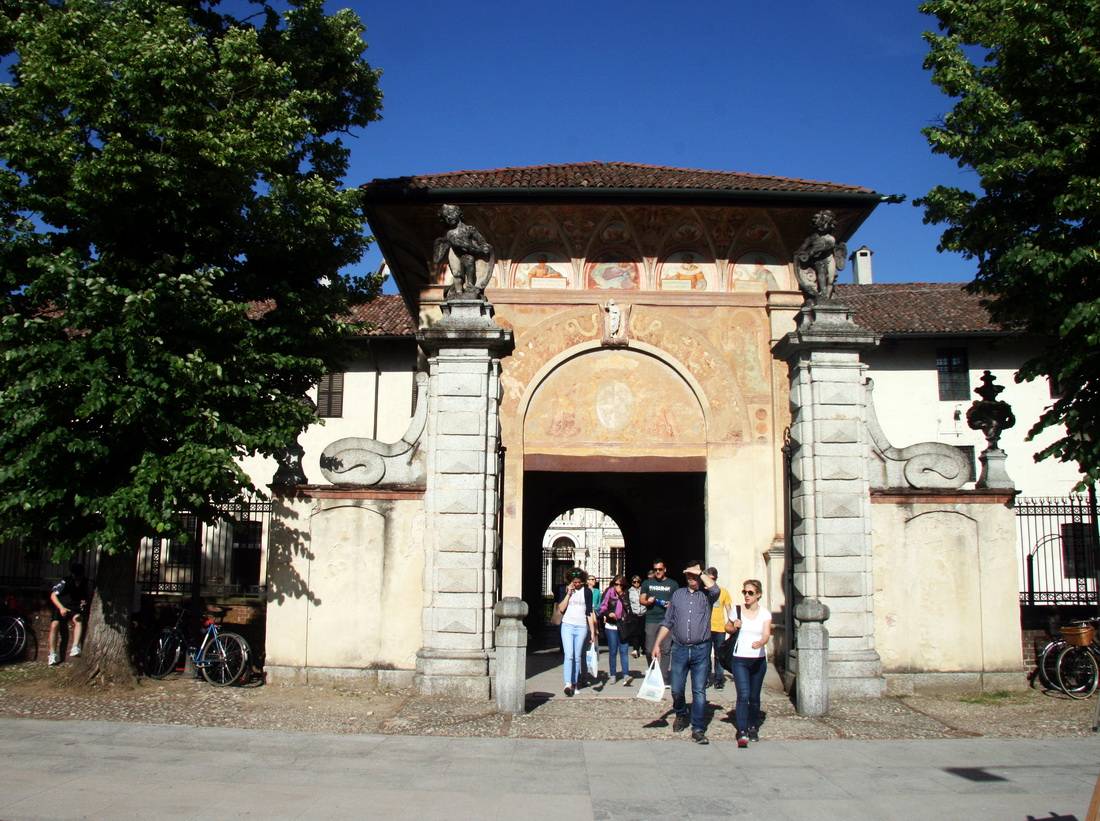
Through this gate, the 21st century stays behind — at least for a while.
🔍 Practical tips for visiting
- Opening hours: Closed on Mondays. Check the official website — times may vary.
- Dress modestly: Shoulders and knees covered.
- Photos: Officially not allowed inside. Unofficially? Just don’t photograph the monks.
- Shop local: The monks sell herbal teas, soaps, honey — and rice. Their rice is legendary. I took some home and made the fluffiest risotto of my life.
🚉 How to get to Certosa di Pavia
From Milan: You’ve got two easy options:
- Via Milano Porta Garibaldi Passante: Trains run 1–2 times an hour. Journey ~40 min. Most direct route.
- Via Milano Rogoredo: Trains every 30 minutes, ride ~20 min.
- Platform tip: The platform is short — stand near the middle of the train to disembark easily.
Once off the train, it’s a short 15-minute walk to the monastery. You’ll see it from the tracks. There’s also a small café near the station for a snack or coffee.
From Pavia: It’s possible, but less convenient — the monastery is 8 km from the city centre. You’ll need a bus or a short regional train ride.
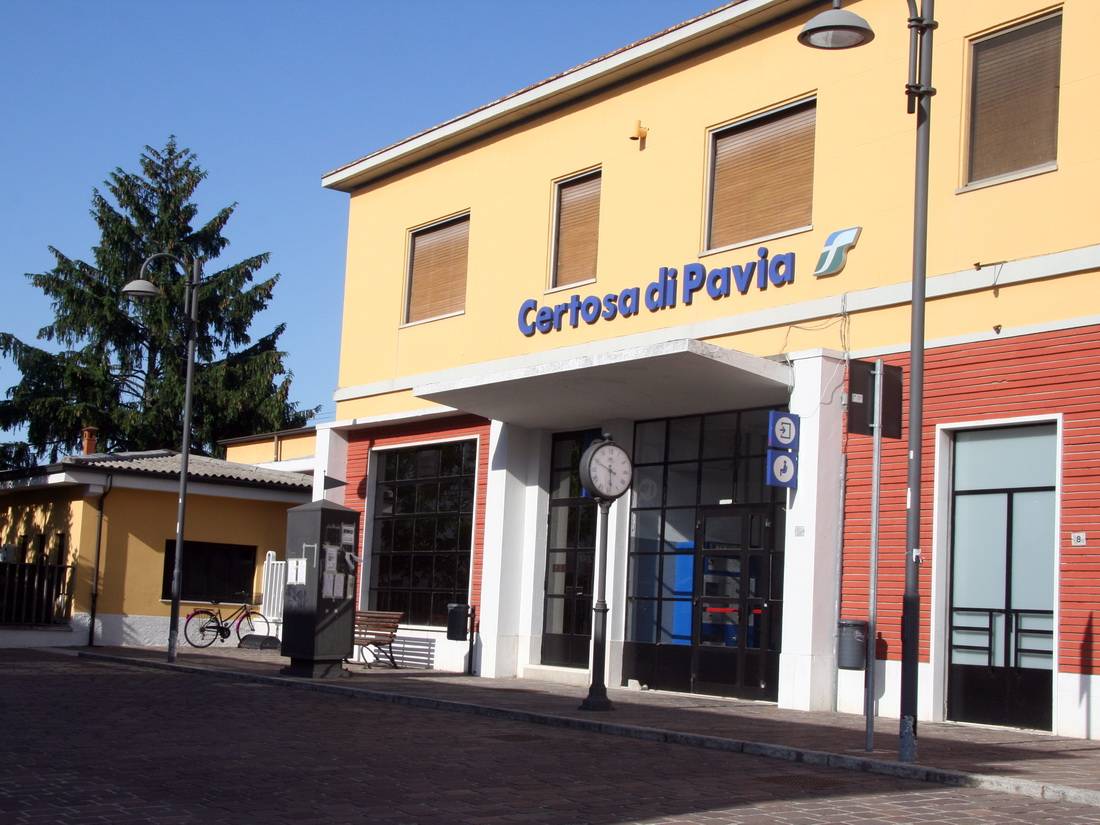
Certosa di Pavia’s train station. Small, quiet, and just a short walk from the monastery.
🌿 Marking Your Spot at Certosa di Pavia
Certosa di Pavia isn’t your typical tourist spot — and that’s the beauty of it. Quiet, beautiful, layered with centuries of spiritual life. I didn’t expect it to move me, but it did. If you’re near Milan, it’s worth stopping by. It’ll stay with you.
And if you’re ready for more — Lake Como makes a perfect next stop. Check out my guide →
